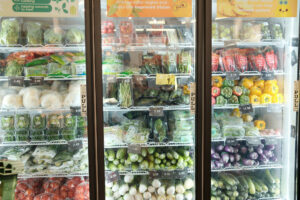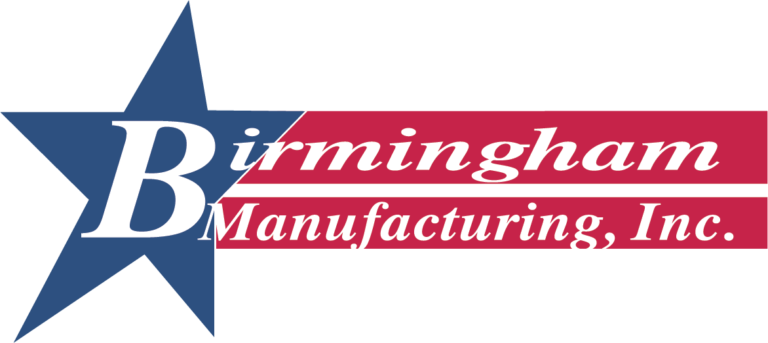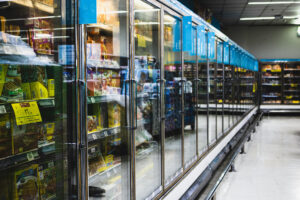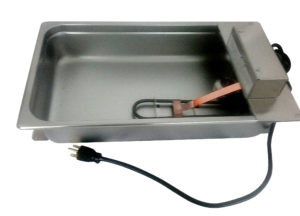A systematic way to deal with Reach in the freezer and commercial refrigeration maintenance in controlling the evaporation is the best aid provided.
The pervasive Open-Air Refrigeration units or display cases are fundamental to numerous cafeterias, restaurants, and convenience shops. It’s anything but a huge energy user in these facilities; however, it is seldom considered until issues arise.
Issues incorporate inability to maintain pressure and compressor or evaporator failure, the two of which can bring about costly losses to the items put away in the refrigerated cases. Just as superfluously high energy use, these issues can be kept away from by noticing equipment, controlling, and making a remedial move.
Evaporators
Dampness or moisture from the air freezes onto the evaporator coils (the cooling coils in the freezer) and forms a protecting or insulating barrier to heat transfer. Airflow additionally diminishes as the passages thin down because of ice development.
Each evaporator has a defrost cycle to dissolve ice or frost that has developed on the evaporator coils. Water from the dissolved ice is drained from the freezer . . . preferably.
It’s not surprising, notwithstanding, to discover evaporators in a condition of helpless support. For some evaporator units, the ice isn’t dissolved, or the water isn’t as expected drained, bringing about a block of ice taking control over the evaporator.
When the coil freezes, heat transfer is enormously diminished, bringing about the compressor is working more diligently and longer. It works more enthusiastically because the suction pressure drops, making the compressor work at a higher differential pressing factor, requiring more power. It works longer since heat transfer is decreased.
When ice buildup is over the top, the compressor will run constantly, and the cooler temperature setpoint won’t be kept up with.
As the ice liquefies, the water needs to drain out of the cooler. This doesn’t generally happen. Trapped moisture that freezes can harm a freezer, particularly older ones where breaks or cracks permit water to leak in, then, at that point, freeze and extend. Sharp rocks and stalagmites of ice showing up in your cooler are justification for swift action to keep away from expensive harm.
Condensers
The condenser coil of the refrigeration system assists in removing heat from the system. It’s not surprising to discover condensers situated in encased spaces or spaces with insufficient airflow to remove heat from the area.
The temperature around the compressor rises, bringing about higher head pressure for the compressor, which again builds compressor power.
To successfully remove heat, the condenser ought to be put in an all-around ventilated area where the temperature is controlled to permit heat to be taken out without any problem. Encased spaces will require openings for cooling air admission and exhaust.
Much of the time, a fan will be needed to move sufficient air through space. If the condenser heat is rarely required, it ought to be exhausted straightforwardly outside if conceivable.
In situations where it very well might be utilized for space heating —, for example, for a close-by dry extra space — controls might be installed to coordinate the flow inside for heating and outside when heating isn’t needed.
Condenser coils ought to likewise be checked consistently for tidiness. Residue and flotsam, and jetsam will behave like ice buildup on an evaporator coil. This will protect the heat transfer surface and decrease airflow, which will make the compressor run more earnestly and longer. In outrageous cases, compressors may fall flat.
Refrigerated Space and Shell
Albeit the actual space doesn’t have any mechanical parts or equipment, it shouldn’t be overlooked. The shell of the freezer or cooler ought to be assessed routinely for spills and free insulations or panels. Breaks or cracks and other voids in the body can make excessive moisture amass, possibly causing more concerning issues.
The door is additionally a vital segment of the freezer. Doors should be fixed appropriately to remove air invasion, which expands the cooling load and may cause moisture buildup inside the space and on the evaporator.
Ice buildup on the actual door is a specific event when the door heater comes up short and tends to freeze the door shut or hold it back from closing. Appropriate consideration ought to likewise be taken while setting things inside the space. If space is packed with something or items are put before the evaporator fans, the course of air is enormously diminished alongside the commercial refrigeration unit performance.
Maintenance issues should be carefully looked into to avoid excessive energy use and costly repairs, as well as potential product loss. Extra support issues can be assessed in the Walk-in Cooler/Freezer Diagnostic Protocol table displayed underneath.
Power is on; however, the control board doesn’t show.
Possible Causes
- Stage loss or circuit blew.
- Power stage open or transformer shorted.
- Control board failure.
Solution
- Check wiring for breaks and replace the fuse.
- Check Transformer yield voltage (12V)
- Replace cold storage space control board.
Control board displays; however, the compressor doesn’t run.
Possible Causes
- Compressor transfer tripped.
- Hi-Lo pressure security switch shut down.
- Defective contactor or coil.
- Cold room temperature is lower than the operating setpoint.
- Internal thermal overload tripped.
- Compressor glitch.
Solution
- Decide reason and make the right move.
- Decide the type and reason for the closure and right it before resetting the safety switch.
- Repair or replace.
- Reset operation temperature setpoint.
- Wait until the compressor chills off for reset.
- Check compressor motor winding.
High release pressure.
Possible Causes
- Filthy Condenser coil.
- Fan not running.
- System overcharged with refrigerant.
Solution
- Clean walk-in freezer and its condenser coils.
- Check fan motor and its electrical circuit.
- Recover excess refrigerant.
Low discharge pressure.
Possible Causes
- Lacking refrigerant in the system.
- Low suction pressure.
Solution
- Check for spills; fix and add charge.
- See remedial strides for low suctions pressure.
High pull pressure.
Possible Causes
- Excessive load.
- Expansion valve overloading.
Solution
- Lessen load.
- Direct superheat.
Low suctions pressure.
Possible Causes
- Absence of refrigerant.
- Plugged suction filter.
- Evaporator messy or frosted.
- Fan not working.
- Expansion valve underfeeding.
Solution
- Check for spills. Fix an additional charge.
- Replace the suction filter.
- Clean and defrost.
- Check fan motor and circuit control.
- Regulate superheat.
Heavy ice buildup on evaporator fins.
Possible Causes
- Too much time between defrost cycles or inadequate defrosts.
Solution
- Manual thaw out and change thaw out cycle.



